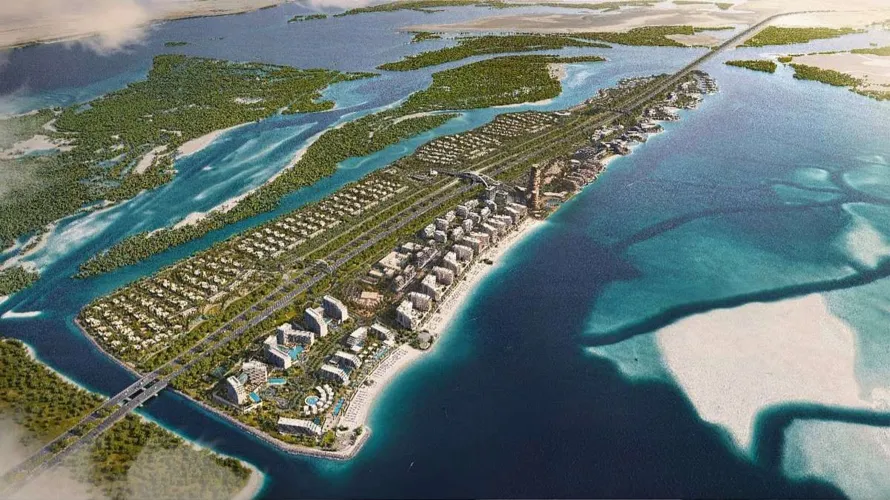Robust Industrial Rental Growth: 25% Increase Boosts Abu Dhabi Logistics Demand
Abu Dhabi’s industrial market is experiencing an impressive surge in logistics activity and robust economic performance. In 2024, Abu Dhabi Logistics Demand pushed rents up 25% across power hubs like Mussafah, ICAD, and KEZAD. It’s a clear sign: the race for prime space is on, and logistics is leading the charge.
In fact, KEZAD notably surged by 38%, placing average rents consistently above the AED 500 (US$136) per square meter threshold. This upward trend reflects a market responding decisively to evolving e-commerce and last-mile delivery requirements, underscoring that the strong Abu Dhabi Logistics Demand is now reshaping tenancy dynamics.
Strategic Infrastructure Investments Meet Soaring Abu Dhabi Logistics Demand
Anticipating persistent market pressures, developers and government initiatives are actively gearing up to bridge the supply/demand gap. Massive investments in infrastructure—such as Etihad Rail and the CMA Terminals at Khalifa Port—are paving the way for enhanced connectivity and capacity.
New industrial projects are on the horizon, including two major developments in Al Falah, near Zayed International Airport. One is a landmark AED 5 billion ($1.36 billion) industrial and logistics park, while the other is a 90,000 sqm facility scheduled for completion by late 2026. Both projects are strategically designed to cater to surging Abu Dhabi Logistics Demand, ensuring that high-quality, fully integrated service chains are built to support advanced industry operations.
Economic Growth and Market Expansion Drive Abu Dhabi Logistics Demand
With the emirates’ non-oil activities reaching their highest-ever contribution of 54.7% in 2024, economic expansion is directly fuelling heightened Abu Dhabi Logistics Demand. This economic momentum has spurred not only the logistics sector but also a broader appetite for warehousing and fulfillment spaces. The blend of rapid economic growth with increased consumer demand has created an environment where businesses are actively seeking high-spec industrial assets in Abu Dhabi.
Complementary Office Market Trends and the Rise of Abu Dhabi Logistics Demand
Interestingly, the office market has also contributed to shaping the region’s logistics profile. Recent reports indicate that key locations such as Capital Gate Tower, Addax Tower, and ADGM experienced rental hikes between 12% and 14% year-over-year. High occupancy rates—recording up to 95% in Grade A segments—further highlight the region’s robust commercial activity. This dynamic supports the growing Abu Dhabi Logistics Demand by ensuring that the administrative and technological arms of businesses are equally well-equipped. The synergy between vibrant office sectors and industrial leasing creates a comprehensive ecosystem that amplifies the overall Abu Dhabi Logistics Demand.
Warehouse Rents in Q1 2025: A Clear Indicator of Sustained Abu Dhabi Logistics Demand
Warehouse investments, too, are revealing the underpinnings of market strength. In Q1 2025, warehouse rental rates climbed 10.9%, reaching AED 401 per square meter. This figure, reflective of rising lease rates among international tenants and top-tier logistics operators, reinforces that even as new supply is introduced, the persistent Abu Dhabi Logistics Demand continues to hold rent levels upward. This evolution is expected to remain an underlying market driver, as high-quality industrial assets geared toward fulfillment and last-mile operations become ever more in demand.
In Conclusion: A Dynamic Landscape Defined by Accelerating Abu Dhabi Logistics Demand
The landscape of Abu Dhabi’s industrial and logistics sectors is evolving rapidly under the influence of substantial rental increases, strategic infrastructural investments, and strong underlying economic growth. With data points such as the 25% rental surge, 38% gains in key hubs, and a Q1 2025 warehouse rent increase of 10.9%, it’s clear that the force behind the robust Abu Dhabi Logistics Demand is not slowing. This demand is propelling market innovations and project developments that are set to redefine the region’s commercial framework in the coming years.
Also Read: MENA’s Fastest-Growing Finance Hub: Abu Dhabi’s Rise







